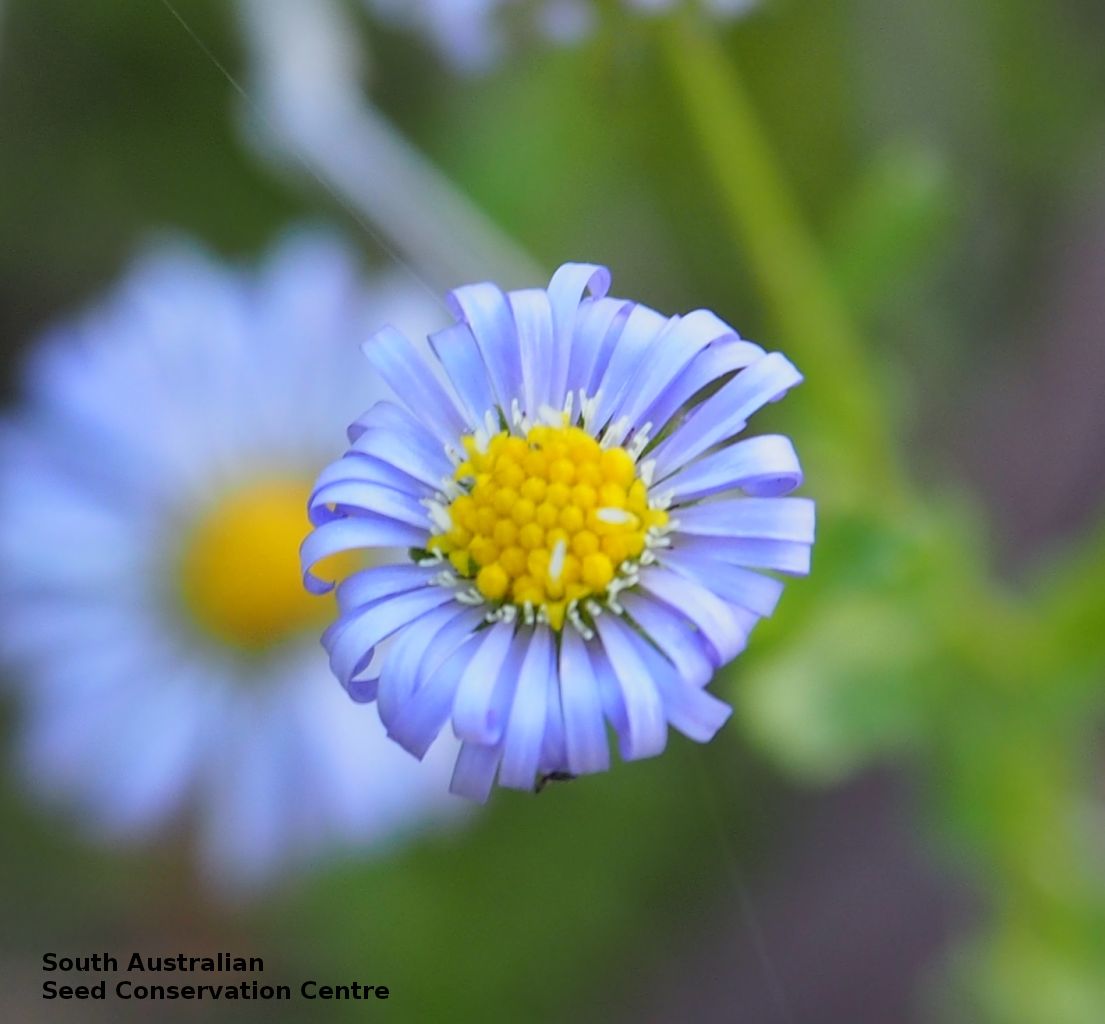
















Botanical art
Common names
Blue Burr-daisy
Purple Burr-daisy
Etymology
Calotis from the Greek 'kalos' meaning beautiful and 'otos' meaning ear, after the first species named in the genus Calotis cuneifolia which has an ear-shaped pappus. Cuneifolia from the Latin 'cuneus' meaning wedge and 'folium' meaning a leaf, referring to the wedge-shaped leaf or leaf tapered to the base.
Distribution and status
Found along the Murray River in South Australia, from Blanchetown to the border, growing in river floodplains. Also found in Northern Territory, Queensland, New South Wales and Victoria. Native. Uncommon in South Australia. Rare in Northern Territory. Uncommon in Victoria. Common in the other States.
Herbarium region: Murray
NRM region: South Australian Murray-Darling Basin
AVH map: SA distribution map (external link)
Plant description
Perennial herb to 60 cm high with erect to prostrate stems, sparsely branched, pubescent, becoming woody at the base. Basal leaves petiolate, soon withering. Stem leaves sessile, cuneate to spathulate to 4 cm long and 2 cm wide abruptly expanded and amplexicaul at the base; 3-11-toothed at the apex. Flower-head solitary or in loose terminal cymes of 2 or 3 white to mauve daisy-flowers. Flowers most of the year. Fruits are brown round spiny fruit-head. Seeds are brown triangular-shaped seed to 4 mm long and 2 mm wide, with two long spine at one end. Seed embryo type is spathulate.
Seed collection and propagation
Collect seeds between January and December. Collect mature seed heads that are dried and turning brown by picking off the heads and placing them in a paper bag. Be careful as the heads are spiny. Leave the heads in the paper bag to dry for at least a week. No further cleaning required if only the heads are collected. If other material were collected, use a sieve to separate the unwanted material. Whole heads can be stored with a desiccant such as dried silica beads or dry rice, in an air tight container in a cool and dry place. From two collections, the seed viability was average to high, ranging from 70% to 100%. Seeds are non-dormant, viable seed should germinate readily.
| Location | No. of seeds (weight grams) | Number of plants | Date collected | Collection number Collection location | Date stored | % Viability | Storage temperature |
|---|---|---|---|---|---|---|---|
| BGA MSB | 21,300 (20.9 g) 21,000 (20.8 g) | 100+ | 27-Apr-2006 | TST9 Murray | 14-Sep-2006 | 70% | -18°C |
| BGA | 5,250 (8.46 g) | 20 | 12-Dec-2006 | RJB70468 Murray | 1-Aug-2007 | 100% | -18°C |
Number of plants: This is the number of plants from which the seeds were collected.
Collection location: The Herbarium of South Australia's region name.
% Viability: Percentage of filled healthy seeds determined by a cut test or x-ray.